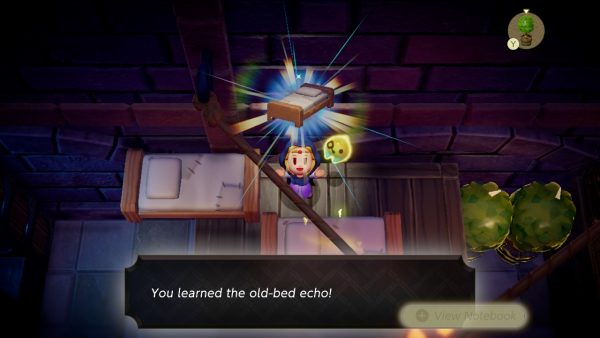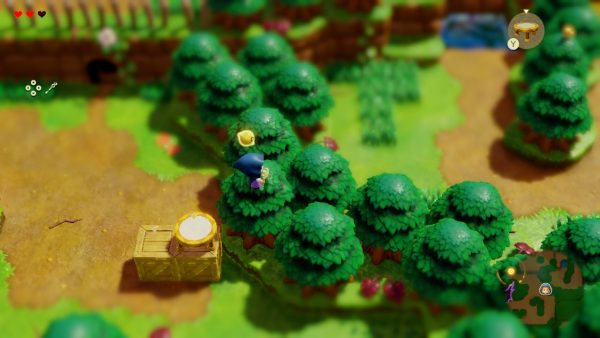After the drastic departure from the traditional “Zelda” formula taken by “The Legend of Zelda: Breath of the Wild” proved divisive, it seemed the series, for better or worse, had moved on from the old structure. However, “The Legend of Zelda: Echoes of Wisdom” proves otherwise by not only providing an incredible experience but also using a compelling combination of the two formulas.
Unlike the last two original games in the series, “Echoes of Wisdom” is a brand new entry utilizing a top-down perspective, borrowing the same delightfully charming graphical style as 2019’s remake of “Link’s Awakening.”
“Echoes of Wisdom” is the first original top-down adventure since 2015’s “Tri Force Heroes” and the first non-remake or multiplayer-centric game to use the traditional formula since 2013’s “A Link Between Worlds,” another game with a top-down perspective.
While “Echoes of Wisdom” brings back features absent from the two “open-air” games that came prior, such as labyrinthine dungeons that consist of more than just hitting several switches, and collectibles around the world like heart pieces, it also takes influence from said two games.
The story follows a quest-based format and NPCs around the world offer side quests in addition to the main quests, all of which are tracked in a log with markers on the map for the active quest. Furthermore, the world is vast and can be explored in its entirety pretty much from the beginning.
With that said, there is still linearity to the story.
While dungeons can be completed in any order, the player must progress through a specific set of dungeons before the next story beat, and subsequently the next set of dungeons will unlock.
Regardless, the entire playthrough felt highly reminiscent of the games that came before “Breath of the Wild” with some additions that seamlessly blended in and made the game feel even more unique alongside its drastically altered combat and change in protagonist.
That’s right, as the word “wisdom” in the game’s title implies, for the first time in a mainline “Legend of Zelda” game, besides small moments in “Spirit Tracks,” the titular Princess Zelda is actually playable. With Link and the King of Hyrule having vanished into one of the many dark rifts plaguing Hyrule, Zelda must step into the hero’s shoes and save her Kingdom.

With the change in playable character also comes a change in overall gameplay. “Echoes” and “wisdom” are the name of the game, in more ways than one. Rather than being action-focused like previous games, “Echoes of Wisdom” takes a more tactical approach with its primary gameplay component: Echoes.
By interacting with a shimmering object in the world or defeating an enemy for the first time, Zelda can learn a new “echo,” or the ability to temporarily recreate the object or enemy.
Rather than rushing in and looking for an opportunity to strike an enemy with a weapon or item while playing as Link, Zelda mostly takes a back seat by instead throwing objects or summoning echoes of enemies to deal damage.
With that said, players can still rush in and look for an opportunity to strike with a weapon or item.
Using the Energy Gauge activates Swordfighter Form, allowing Zelda to wield a sword and shield and jump higher. While this form is useful for combat and mandatory for clearing some dungeon obstacles, echoes cannot be created in this form.
With the game designed around the use of echoes, and Swordfighter Form still being efficient and fun to use, both gameplay styles strike a fine balance where one is largely situational but neither feels better or worse to use than the other to defeat enemies.
Puzzles this time around are also designed around echoes. Whether players decide to make a staircase using tables and boxes, or to use an enemy’s elemental affinity to activate switches or melt ice, there are multiple ways to solve the game’s puzzles, and all feel equally rewarding.
Echoes also have other uses, such as resting in beds to restore hearts or stacking water blocks to reach a high ledge. This allows for a high amount of freedom when exploring, and a motivation to explore the world to find all of the 120+ echoes.
However, despite all those positives, there are some negatives.
First and foremost, the frame rate is inconsistent. During battles or when large objects are on screen the frame rate has a tendency to drop. While noticeable, it never hindered the experience nor dropped far enough to be described as egregious.
Also, the game only has one memorable dungeon, which stands out in a series where most games have a number of unique dungeons that bring something new to the series, per entry. “Echoes of Wisdom” only has one that involves changing the temperature to freeze or melt pools of water. While one or two others stood out a bit as well, they all were late in the game and didn’t do anything new.
Finally, alongside the additions brought over from the “open-air” games, “Echoes of Wisdom” carries over the quick-select menu from “Tears of the Kingdom.” While this is useful for swapping between two or three echoes on the fly, it is once again super clunky as well as painfully tedious and cumbersome to use once the player has accumulated over 100 echoes.
Regardless, “The Legend of Zelda: Echoes of Wisdom” as a whole stands out as a solid new entry in one of Nintendo’s most popular franchises.
Despite a change in the core gameplay and Zelda being playable instead of Link, it still feels like a natural iteration upon the games that came before with seamless influences from the most recent releases. A similar fusion of the two formulas, albeit with a closer focus on the new, could very well serve as a compelling approach to take the next big 3D title.






